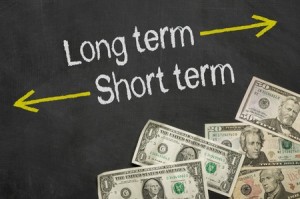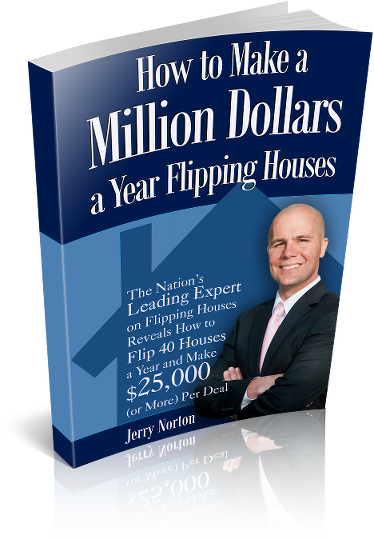
Why The IRS Is After You and The Three Methods to Reduce Your Taxes
While some may consider this a rather boring topic (me included), it nonetheless is something every real estate investor (especially if you’re flipping houses) should know and understand as it directly affects your bottom line.
Many new investors have no idea the tax implications of flipping houses. That is… until they successfully flip a few deals and make some money and April 15th roles around. Then they quickly get educated!
In an effort to prevent that from happening to you and to give you more insight into helping you do more deals and make more money, I wrote this article about the tax implications of flipping houses and some methods to reduce your taxes. After all, paying less in taxes is one way to make more money.
Primary Residence Vs Investment Property:
The first thing you need to understand is that your primary residence (the home you live in) is not treated the same as a “non-owner occupant” home or investment property (not your primary residence) in the eyes of Uncle Sam. Many investors believe they can roll over profits from an investment property the same way as a primary residence. The reality is not only are the tax consequences completely different but a lot more costly.
Short Term Vs Long Term:
Here is what you must understand. Investment profit is considered capital gain and is taxed at two levels depending on how long you owned the property.
 Own the property for 1 year or less and you’ll face short-term capital gains, which is taxed at ordinary income rates. This could be as high as 35%! Hold the property for more then 1 year and you’ll face long-term capital gains that maxes out in most cases at 15%.
Own the property for 1 year or less and you’ll face short-term capital gains, which is taxed at ordinary income rates. This could be as high as 35%! Hold the property for more then 1 year and you’ll face long-term capital gains that maxes out in most cases at 15%.
Now, when it comes to flipping houses, you have to decide if tying up investment capital on a flip and waiting 1 year outweighs flipping it faster, let’s say in 6 months, and paying the higher tax. In my opinion, in most cases, if I can flip 2 deals in one year using the same investment capital, then you come out ahead even at the higher tax.
Check out the comparison example of doing 1 deal in 1 year vs. doing 2 deals in 1 year using $100,000 investment capital, assuming the gross profit was $25,000 per deal…
1 Deal in 1 Year:
$100,000 investment capital
$25,000 gross profit
$3750 tax at 15%
$21,250 net profit
2 Deals in 1 Year:
$100,000 investment capital
$50,000 gross profit
$17,500 tax at 35%
$32,500 net profit
You can see that you’d make more money doing 2 deals vs 1 deal.
IRS Rules on Flipping As a Trade:
Here’s the catch…if you complete too many flips in a given year, the IRS may classify your house flipping activities as a “trade” or business and will still nail you for ordinary income tax on your gains even it you held the asset for longer than a year.
 So you may be wondering, “Ok, so what’s the number of flips to be considered a dealer-trader?” Not so fast. That’s where the IRS rules are vague. It’s not so much a matter of how many transactions you’ve completed but rather is it your business. In other words, if that’s pretty much what you do, the IRS will likely consider you a dealer.
So you may be wondering, “Ok, so what’s the number of flips to be considered a dealer-trader?” Not so fast. That’s where the IRS rules are vague. It’s not so much a matter of how many transactions you’ve completed but rather is it your business. In other words, if that’s pretty much what you do, the IRS will likely consider you a dealer.
So basically, the more successful you are at flipping houses, the more you pay in taxes (welcome to my world). Don’t even get me started on our country’s current “tax-the-rich-more” policies or I’ll go off on a tangent about moving to Puerto Rico (Pay less taxes if you live there. Seriously, google it).
And trust me when I tell you, the IRS is looking out for real estate flipping transactions as this is a great source of additional income. Let me be clear…If the IRS rules that your house flipping investments are a business and that’s what you’re doing to earn a living, the property changes from a capital asset to income producing income that’s subject to ordinary tax rates plus another 15% in self employment taxes.
Now, don’t get to discouraged. Here are 3 methods to reduce your taxes.
Method #1:
By the way, if you decide to move in to the property making it your primary residence and then renovate it, you must live it for 2 years (or a total of 730 days out of the last 5 years). Then when you finally sell it, up to $250,000 ($500,000 if you’re married and file jointly) of your profit is excluded from taxation.
The downside is this is a “one-at-a-time” strategy and is very taxing on your family to live in a dilapidated house for 2 years.
Method #2:
A much better strategy is to defer the tax on your gain by doing a 1031 exchange. The 1031 exchange rule allows you to trade an investment property for a similar one. In other words, you can use your profits to buy another investment thus deferring the tax owed. The only restriction is that you cannot exchange for a personal asset. It has to be an income producing investment asset.
Keep in mind the 1031 will only postpone your taxes owed. When you finally sell and realize your profit, you’ll owe the taxes (light bulb – don’t sell!). The downside is if flipping houses is your primary source of income this strategy won’t work. However, as you do more deals, use the 1031 exchange on every 5th deal as a long-term strategy.
Method #3:
![]()
KEEP GOOD RECORDS! I can’t tell you how many flippers I know who co-mingle investment funds with personal funds, don’t track expenses carefully and then when scrutinized by the IRS, are subject to additional taxes. This can easily be avoided by separating investing funds from personal funds and by keeping really clean books.
One final thought…
I’ve met a lot of people who purposefully don’t make more money because they don’t want to pay more taxes (at least that’s the lame excuse they give). In my opinion…
I’d rather make more money and pay more taxes then not make money and not pay taxes.
If more people had that mindset, we’d be much better off as a society. At any rate, leave a comment below and let me know if you found this article helpful and if you have any other tax saving ideas…
Until Next time, Happy Investing,
Jerry Norton
Click here to get a FREE copy of Jerry’s best selling eBook, “How to Make a Million Dollars a Year Flipping Houses.”




